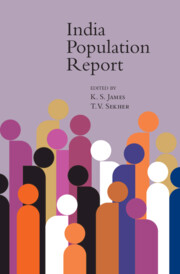7 - Internal Migration and Temporary Labour Circulation in India
Published online by Cambridge University Press: 15 August 2023
Summary
Background
Migration has been an important determinant of population change associated with demographic transition, urbanization, and economic development. It has a unique ability to transform the size, distribution, and composition of national populations. Zelinsky (1971) has successfully linked the different stages of demographic transition with the level and direction of migration known as mobility transition. Recent studies have also established that when an increasing number of developing countries reach the advanced stages of demographic transition, there would be a concomitant increase in the impact of migration on the settlement systems of those countries (Charles-Edwards et al., 2020; King, 2012).
In developing countries, migration is mostly governed by the level of economic development of a region. In some countries like India, internal migration is predominantly seen in the form of interstate movement, which is generally propelled by two factors: uneven economic development and variations in the demographic transition of states (Srivastava et al., 2020). In reality, however, the incidence of intrastate migration is several times higher than that of interstate migration (Bhagat and Keshri, 2020). It is important, however, to emphasize that irrespective of migration being intrastate or interstate, it is inevitably a significant livelihood strategy adopted by a major section of the Indian population. While studying migration and linking it with development, researchers generally do not make a distinction between long-term migration, which could take the form of permanent or semi-permanent migration, and short-term migration of a temporary and circulatory nature. We have been arguing that this distinction is important to understand the livelihood strategy of rural masses (Bhagat and Keshri, 2020; Keshri and Bhagat, 2013; Kumar and Bhagat, 2017). It is likely that with the increasing duration of migration, a person's economic status not only becomes better, but they are also absorbed in urban areas as a permanent migrant, whereas temporary circulatory migrants keep on shuttling between the place of origin and the place of destination.
The outbreak of the Covid-19 pandemic and the ensuing migration crisis has highlighted the poor understanding on the part of government agencies, which till recently had no clue of the real number of migrants and migrant labour staying in different parts of the country (Bhagat et al., 2020). There is a need to provide researchers and policymakers with some recent evidence of migration and its associated factors.
- Type
- Chapter
- Information
- India Population Report , pp. 246 - 269Publisher: Cambridge University PressPrint publication year: 2024



